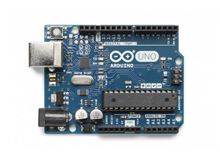Arduino has become popular in tinkering communities and maker movements for being a user-friendly way to implement complex electronics hardware easily into DIY projects. However, many of the accessories that have found their way into the Arduino ecosystem are backed by very professional-grade, production-ready electronics components, making Arduino an increasingly valuable toolset in the engineering and design community. This article will cover some of the top Arduino-compatible sensor tools that feature popular sensing technologies commonly found in the electronics industry and will cover the basics of each technology.
By definition, when a machine interacts with a human, it’s considered an HMI interaction; however, there is a wide variety of different ways that this interaction can happen. In our day-to-day lives, we interact with these sensors more often than we would care to know. One of the most common types of sensors that go virtually unnoticed, are motion sensors.
Ähnliches Produkt:
A000066 | Arduino Uno Rev3
Arduino Corporation Eingebettete Systementwicklungsboards und -kits AnzeigenMotion Sensors (PIR) for Arduino
Whether you are walking down an auto-lit grocery isle, or in a high security facility, chances are you are being “watched” by a motion detector. If you are interested in creating a motion detecting application, or implementing this feature into your design, you may want to consider this PIR Motion Sensor module for prototyping. Built around Passive Infrared (PIR) Sensor , this Arduino-compatible motion sensor is a full plug-and-play module that enables simple design prototyping using this technology. This sensor has a 120 degree cone of sensitivity and a sensing range of up to 7 meters (22 feet), meaning it can be used for a multitude of “longer” range sensing in a variety of applications as long as you have access to a 5V-12V power source.
Ähnliches Produkt:
Arduino Thermal Camera: Close Range Solutions
If your application requires an added level of complexity to be certain that you are actually sensing an object that is alive, like a human or an animal, a thermal camera is a great solution as long as you are at relatively close range. This Thermal Camera Breakout Board features the AMG8833 Thermal Camera from Panasonic, which is popular for applications that require temperature read-outs across an area. This Grid-EYE high performance sensor has 64 pixels, and has been designed into everything from automatic door openers to microwave ovens. But best of all, it is very easy to prototype with thanks to the Breakout Board from Adafruit and the ease-of-use of Arduino.
Ähnliches Produkt:
Ultrasonic Sensors for Arduino: More Detailed Solutions
If your design requires knowing more about an object than just ‘if’ it is there, and you need to know ‘how far’ away it is from your device, an extremely popular solution is an ultrasonic rangefinder. There are many different configurations, capabilities, and packages in ultrasonic range finders, but if you are considering prototyping with one, we recommend looking at Adafruit’s Analog/Digital output Ultrasonic Rangefinder. Ultrasonic rangefinders simply measure the time that it takes a ‘cone’ of sound to bounce back to the object of origin. The shape of the ‘cone’ can depend on the power and configuration of the device, which is why sensing distance and cost can fluctuate so dramatically. The sensor mentioned above can sense long distances up to 6.5 meters with 2cm resolution, but has low resolution at close distances <30cm. Implementing this type of ultrasonic sensor into your design is fairly simple with Arduino as well.
Ähnliches Produkt:
Infrared Distance Sensor for Arduino
For shorter distance sensing, consider using an IR distance sensor. Rather than using ultrasonic sounds, IR distance sensors use an infrared light emitter, and detect the presence of the infrared light reflecting back into the IR receiver. The Arduino-compatible SHARP distance sensor outputs a simple analog signal that outputs varying voltage when an object is within its 10cm to 80cm sensing range.
‘Time of Flight’ Sensor for Arduino
For applications where very accurate resolution is required, consider designing with a Time of Flight (ToF) sensor. Rather than utilizing sound or infrared light as the tracking variable, time of flight sensors use lasers. The timing principle is relatively similar to ultrasonic and IR, but unlike both of those technologies a Time of Flight sensor uses an extremely narrow beam rather than a cone. For example, the easy-to-use ToF Module from Adafruit utilizes a specialized ToF sensor from STMicroelectronics that has an accurate range from 5mm to 100mm with a tolerance of 1mm. There are other configurations that are similar, some of which are capable of ranges from 50mm to 1500mm. Additionally, ToF sensors do not have linearity problems like ultrasonic sensors, which make ToF sensors extremely valuable in some applications.








